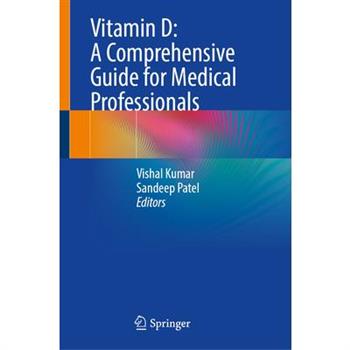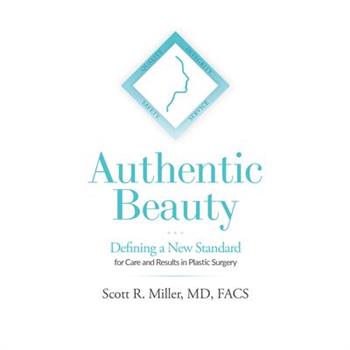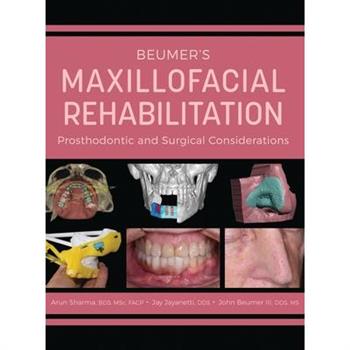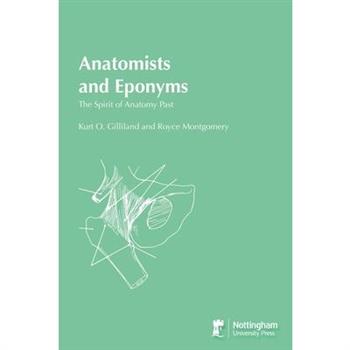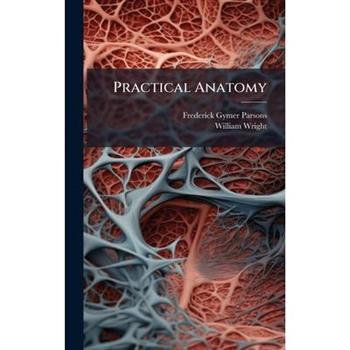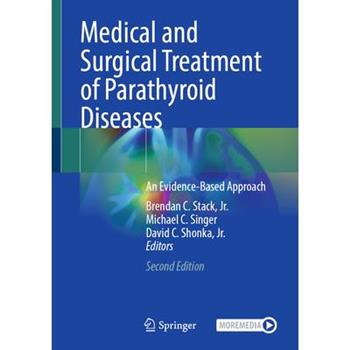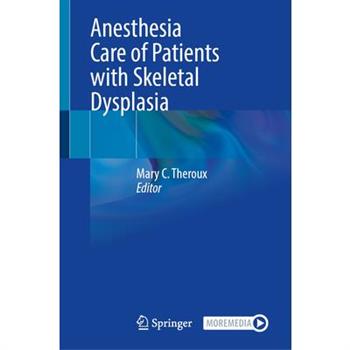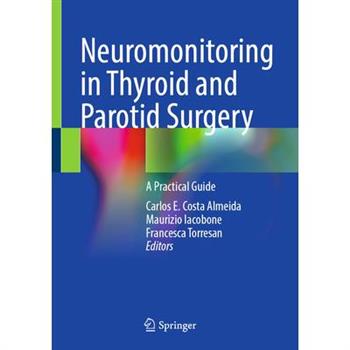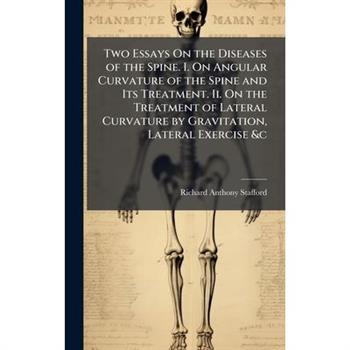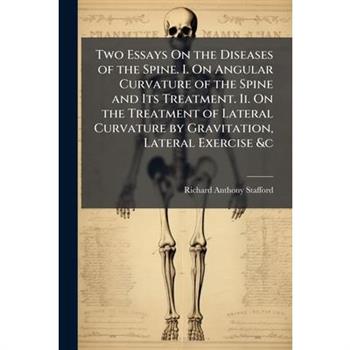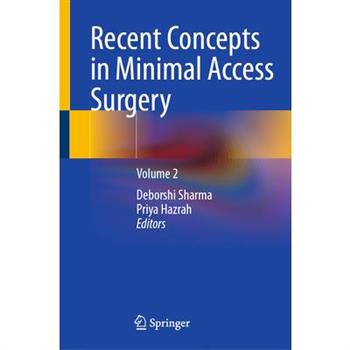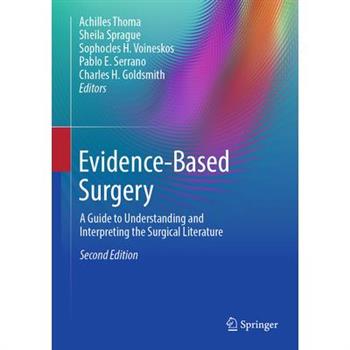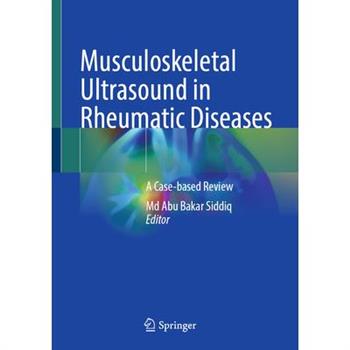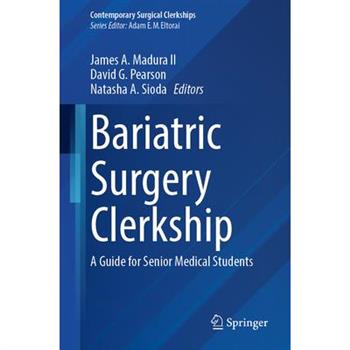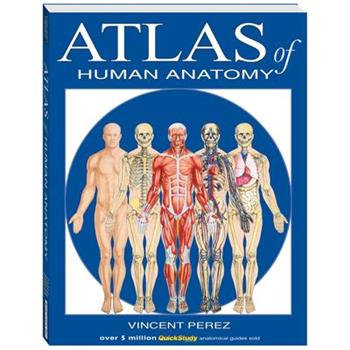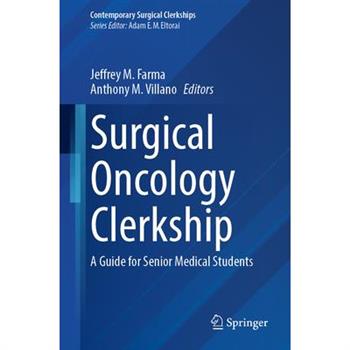Vitamin D: A Comprehensive Guide for Medical Professionals
Profitable poultry
Unlock the secrets to successful poultry farming with "Profitable Poultry: Their Management in Health and Disease," a timeless guide that has been out of print for decades and is now republished by Alpha Editions. This meticulously restored edition is not just a reprint; it s a collector s item and a cultural treasure, designed for today s and future generations of poultry enthusiasts. Dive into the heart of poultry management with this comprehensive poultry handbook that covers everything from healthy poultry practices to effective poultry disease prevention. Discover best practices in poultry management that will empower you to raise chickens for profit while ensuring avian health management. This book is an essential resource for both casual readers and classic literature collectors, offering invaluable insights into sustainable poultry production and innovative poultry farming techniques. With its engaging narrative and practical advice, "Profitable Poultry" inspires readers to embrace the art of poultry care, transforming their farming ventures into profitable enterprises. Whether you re a seasoned farmer or a curious newcomer, this guide provides the tools you need to cultivate a thriving poultry business. Don t miss your chance to own a piece of agricultural history that resonates with the passion of modern farming. Embrace the journey toward profitable poultry farming today!
Beumer's Maxillofacial Rehabilitation
Neuromonitoring in Thyroid and Parotid Surgery
This book provides detailed information about neuromonitoring in thyroid and parotid surgery. In an easy-to-learn format, this book presents the reader with indications and rationale for neuromonitoring use, differences between intermittent and continuous neuromonitoring in thyroid surgery, a detailed description of how to do it in open and endoscopic approaches, loss of signal and how to proceed, outcomes, and neuromonitoring in robotic surgery. Detailed information about how to use neuromonitoring in parotid surgery is also presented. This book is the expert all surgeons need to correctly use neuromonitoring in thyroid and parotid surgery.
Atlas of Abdominal Wall Reconstruction
With comprehensive, highly illustrated coverage of the latest advances in abdominal wall surgery, Dr. Michael J. Rosen's Atlas of Abdominal Wall Reconstruction, 3rd Edition, is a must-have resource for repairs ranging from the routine to the complex. Thirteen new chapters, new surgical videos, and new illustrations keep you fully up to date in this fast-growing field. From preoperative management through surgery and postoperative care, this unique text/atlas provides the guidance needed to make the most effective use of both commonly performed and new and emerging surgical techniques for reconstruction.Covers congenital as well as acquired abdominal wall problems and surgeries, covering the full range of disorders which cause these defects and their surgical therapiesFeatures high-quality, full-color anatomic illustrations and clinical intraoperative photos throughoutProvides complete coverage of robotic, laparoscopic, open, and hybrid surgical approaches, from the routine (such as umbilical and inguinal repairs) to the complex (such as reconstruction of major abdominal wall defects with tissue loss and reoperative abdomens)Includes new chapters on Synthetic Mesh Options, Biologic Mesh Options, Absorbable Synthetic Mesh Options, Robotic IPOM, Robotic eTEP, Robotic Flank, Robotic TAR, Robotic Parastomal, Subcutaneous Onlay Laparoscopic Repair, Open Anterior CST, Open Onlay, Open Parastomal, and Open Shouldice Inguinal Hernia RepairContains real-time video clips-many new to this edition-that capture key moments and techniques in abdominal wall surgery and are performed by masters in their respective fieldsAn eBook version is included with purchase. The eBook allows you to access all of the text, figures and references, with the ability to search, customize your content, make notes and highlights, and have content read aloud. Additional digital ancillary content may publish up to 6 weeks following the publication date
Dutton's Orthopaedic: Examination, Evaluation and Intervention, Seventh Edition
The #1 most trusted evidence-based text in orthopaedic physical therapy The definitive text for orthopedic students, Dutton's Orthopaedic: Examination, Evaluation and Intervention delivers a logical, systematic approach to hands-on orthopedic treatment. The text offers the perfect balance in its coverage of the continuum of care, emphasizing the appropriate use of manual techniques and therapeutic exercise while outlining the correct applications of multiple adjuncts to the rehabilitative process. Aided by decision-making algorithms, this comprehensive guide covers anatomy, biomechanics, examination, and treatment of each joint and region and features.Evidence-based and written by a prominent practicing therapist, this is an essential resource for physical therapy students and practitioners.Dutton's Orthopaedic: Examination, Evaluation and Intervention, Seventh Edition includes: - 1,200+ photos and illustrations depict orthopaedic techniques- Videos on testing and method techniques available on AccessPhysiotherapy- Essential information on balance, pain assessment, gait, and concussions- Incorporates the APTA Practice Patterns to address certain dysfunctions
Gray's Atlas of Anatomy
Clinically focused, consistently and clearly illustrated throughout, and logically organized, Gray's Atlas of Anatomy, Fourth Edition, makes it easier for you to master the essential knowledge needed for success on exams, in dissection labs, and in medical and surgical practice. Ideal as both a stand-alone reference and as a companion resource to the popular Gray's Anatomy for Students, this updated atlas contains stunning illustrations that demonstrate the correlation of structures with clinical images and surface anatomy, presenting a vivid, visual depiction of clinical anatomy.Helps you identify the various anatomical structures of the body and better understand their relationships to each other with the visual guidance of nearly 1,000 exquisitely illustrated anatomical figuresBuilds on your existing anatomy knowledge with structures presented from a superficial to deep orientation, representing a logical progression through the bodyDepicts the clinical correlation between anatomical structures and surface landmarks with surface anatomy photographs (now depicting more diversity in skin tone) overlaid with anatomical drawingsOffers new and improved online content, including updated self-assessment questions and answers and 3D videos to aid understanding of key concepts and complex structuresFeatures more than 270 clinical images - including many new laparoscopic, radiologic, surgical, ophthalmoscopic, otoscopic, and other clinical views - placed adjacent to anatomic artwork for side-by-side comparisonPresents artwork consistent with that in Gray's Anatomy for Students and offers further detail and valuable additional anatomical content, such as detailed "wiring" diagrams for pain referral, detailed muscle attachment tables, more osteology, cross-section correlations for each section, imaging sequences for the male and female pelvis, and moreEnhanced eBook version is included. The eBook allows you to access all the text, figures, and BONUS materials, with the ability to search, customize your content, make notes and highlights, and have content read aloud
Handbook of Anatomy for Students of the Fine Arts
"Handbook of Anatomy for Students of the Fine Arts" by J.A. Wheeler is a comprehensive guide designed to provide art students with a foundational understanding of human anatomy. Illustrated with detailed wood engravings, this handbook serves as an invaluable resource for artists seeking to accurately represent the human form in their work. The book covers essential anatomical structures and their relationships, offering insights into proportion, muscle structure, and skeletal framework. By studying this handbook, art students can enhance their observational skills and develop a deeper appreciation for the complexities of the human body, leading to more realistic and compelling artistic creations. This classic text remains relevant for contemporary artists and educators alike.This work has been selected by scholars as being culturally important, and is part of the knowledge base of civilization as we know it. This work was reproduced from the original artifact, and remains as true to the original work as possible. Therefore, you will see the original copyright references, library stamps (as most of these works have been housed in our most important libraries around the world), and other notations in the work.This work is in the public domain in the United States of America, and possibly other nations. Within the United States, you may freely copy and distribute this work, as no entity (individual or corporate) has a copyright on the body of the work.As a reproduction of a historical artifact, this work may contain missing or blurred pages, poor pictures, errant marks, etc. Scholars believe, and we concur, that this work is important enough to be preserved, reproduced, and made generally available to the public. We appreciate your support of the preservation process, and thank you for being an important part of keeping this knowledge alive and relevant.
Practical Medical Anatomy
"Practical Medical Anatomy: A Guide to the Physician in the Study of the Relations of the Viscera to Each Other in Health and Disease and in the Diagnosis of the Medical and Surgical Conditions of the Anatomical Structures of the Head and Trunk" by Ambrose Loomis Ranney, originally published in 1882, offers a detailed exploration of human anatomy as it pertains to medical practice. This historical text provides insights into the anatomical knowledge and diagnostic techniques of the late 19th century, focusing on the relationships between viscera and their implications for both health and disease. Intended as a practical guide for physicians, the book delves into the anatomical structures of the head and trunk, aiding in the diagnosis of various medical and surgical conditions. This edition preserves the original content, making it a valuable resource for those interested in the history of medicine, anatomical study, and the evolution of diagnostic practices. It offers a unique perspective on the medical understanding of the human body during a pivotal period in medical history.This work has been selected by scholars as being culturally important, and is part of the knowledge base of civilization as we know it. This work was reproduced from the original artifact, and remains as true to the original work as possible. Therefore, you will see the original copyright references, library stamps (as most of these works have been housed in our most important libraries around the world), and other notations in the work.This work is in the public domain in the United States of America, and possibly other nations. Within the United States, you may freely copy and distribute this work, as no entity (individual or corporate) has a copyright on the body of the work.As a reproduction of a historical artifact, this work may contain missing or blurred pages, poor pictures, errant marks, etc. Scholars believe, and we concur, that this work is important enough to be preserved, reproduced, and made generally available to the public. We appreciate your support of the preservation process, and thank you for being an important part of keeping this knowledge alive and relevant.
Syllabus of Lectures in Anatomy and Physiology
"Syllabus of Lectures in Anatomy and Physiology" by Thomas Blanchard Stowell, originally published in 1877, offers a glimpse into the teaching methods and curriculum of the State Normal and Training School at Cortland, N.Y. This syllabus provides a structured overview of the core concepts in anatomy and physiology as they were understood and taught in the late 19th century. Intended for students preparing to become educators, the text reflects the era's pedagogical approaches to scientific subjects. This historical document is valuable for those interested in the history of medical education, teacher training, and the evolution of scientific knowledge. Stowell's work offers insights into the educational resources available at the time and the foundational principles deemed essential for aspiring teachers.This work has been selected by scholars as being culturally important, and is part of the knowledge base of civilization as we know it. This work was reproduced from the original artifact, and remains as true to the original work as possible. Therefore, you will see the original copyright references, library stamps (as most of these works have been housed in our most important libraries around the world), and other notations in the work.This work is in the public domain in the United States of America, and possibly other nations. Within the United States, you may freely copy and distribute this work, as no entity (individual or corporate) has a copyright on the body of the work.As a reproduction of a historical artifact, this work may contain missing or blurred pages, poor pictures, errant marks, etc. Scholars believe, and we concur, that this work is important enough to be preserved, reproduced, and made generally available to the public. We appreciate your support of the preservation process, and thank you for being an important part of keeping this knowledge alive and relevant.
Syllabus of Lectures in Anatomy and Physiology
"Syllabus of Lectures in Anatomy and Physiology" by Thomas Blanchard Stowell, originally published in 1877, offers a glimpse into the teaching methods and curriculum of the State Normal and Training School at Cortland, N.Y. This syllabus provides a structured overview of the core concepts in anatomy and physiology as they were understood and taught in the late 19th century. Intended for students preparing to become educators, the text reflects the era's pedagogical approaches to scientific subjects. This historical document is valuable for those interested in the history of medical education, teacher training, and the evolution of scientific knowledge. Stowell's work offers insights into the educational resources available at the time and the foundational principles deemed essential for aspiring teachers.This work has been selected by scholars as being culturally important, and is part of the knowledge base of civilization as we know it. This work was reproduced from the original artifact, and remains as true to the original work as possible. Therefore, you will see the original copyright references, library stamps (as most of these works have been housed in our most important libraries around the world), and other notations in the work.This work is in the public domain in the United States of America, and possibly other nations. Within the United States, you may freely copy and distribute this work, as no entity (individual or corporate) has a copyright on the body of the work.As a reproduction of a historical artifact, this work may contain missing or blurred pages, poor pictures, errant marks, etc. Scholars believe, and we concur, that this work is important enough to be preserved, reproduced, and made generally available to the public. We appreciate your support of the preservation process, and thank you for being an important part of keeping this knowledge alive and relevant.
Practical Medical Anatomy
"Practical Medical Anatomy: A Guide to the Physician in the Study of the Relations of the Viscera to Each Other in Health and Disease and in the Diagnosis of the Medical and Surgical Conditions of the Anatomical Structures of the Head and Trunk" by Ambrose Loomis Ranney, originally published in 1882, offers a detailed exploration of human anatomy as it pertains to medical practice. This historical text provides insights into the anatomical knowledge and diagnostic techniques of the late 19th century, focusing on the relationships between viscera and their implications for both health and disease. Intended as a practical guide for physicians, the book delves into the anatomical structures of the head and trunk, aiding in the diagnosis of various medical and surgical conditions. This edition preserves the original content, making it a valuable resource for those interested in the history of medicine, anatomical study, and the evolution of diagnostic practices. It offers a unique perspective on the medical understanding of the human body during a pivotal period in medical history.This work has been selected by scholars as being culturally important, and is part of the knowledge base of civilization as we know it. This work was reproduced from the original artifact, and remains as true to the original work as possible. Therefore, you will see the original copyright references, library stamps (as most of these works have been housed in our most important libraries around the world), and other notations in the work.This work is in the public domain in the United States of America, and possibly other nations. Within the United States, you may freely copy and distribute this work, as no entity (individual or corporate) has a copyright on the body of the work.As a reproduction of a historical artifact, this work may contain missing or blurred pages, poor pictures, errant marks, etc. Scholars believe, and we concur, that this work is important enough to be preserved, reproduced, and made generally available to the public. We appreciate your support of the preservation process, and thank you for being an important part of keeping this knowledge alive and relevant.
Quain’s Elements of Anatomy, Volume 4, part 2
"Quain's Elements of Anatomy, Volume 4, part 2" is a detailed anatomical reference work. Authored by Edward Albert Sharpey-Sch瓣fer, Jones Quain, and Johnson Symington, this volume presents a comprehensive overview of human anatomy, likely including detailed descriptions and illustrations. Originally published in 1914, this book offers a historical perspective on the study of anatomy and provides insights into the medical knowledge of the early 20th century. It is suitable for students, researchers, and anyone interested in the history of medicine and the intricacies of the human body. This classic text remains valuable for its thoroughness and historical significance in the field of anatomical study.This work has been selected by scholars as being culturally important, and is part of the knowledge base of civilization as we know it. This work was reproduced from the original artifact, and remains as true to the original work as possible. Therefore, you will see the original copyright references, library stamps (as most of these works have been housed in our most important libraries around the world), and other notations in the work.This work is in the public domain in the United States of America, and possibly other nations. Within the United States, you may freely copy and distribute this work, as no entity (individual or corporate) has a copyright on the body of the work.As a reproduction of a historical artifact, this work may contain missing or blurred pages, poor pictures, errant marks, etc. Scholars believe, and we concur, that this work is important enough to be preserved, reproduced, and made generally available to the public. We appreciate your support of the preservation process, and thank you for being an important part of keeping this knowledge alive and relevant.
A System of Practical Surgery
"A System of Practical Surgery" by William Fergusson and George Washington Norris offers a comprehensive overview of surgical practices and techniques prevalent in the 19th century. This detailed text provides insights into the methodologies, instruments, and approaches used by surgeons during a transformative period in medical history. Covering a wide range of surgical topics, from basic procedures to more complex operations, this book serves as an invaluable resource for understanding the evolution of surgical science.The detailed descriptions and practical guidance make this a fascinating glimpse into the past for medical historians, students, and anyone interested in the development of modern surgical practices. This edition preserves the original content, ensuring that readers can experience the knowledge and expertise of surgeons from a bygone era.This work has been selected by scholars as being culturally important, and is part of the knowledge base of civilization as we know it. This work was reproduced from the original artifact, and remains as true to the original work as possible. Therefore, you will see the original copyright references, library stamps (as most of these works have been housed in our most important libraries around the world), and other notations in the work.This work is in the public domain in the United States of America, and possibly other nations. Within the United States, you may freely copy and distribute this work, as no entity (individual or corporate) has a copyright on the body of the work.As a reproduction of a historical artifact, this work may contain missing or blurred pages, poor pictures, errant marks, etc. Scholars believe, and we concur, that this work is important enough to be preserved, reproduced, and made generally available to the public. We appreciate your support of the preservation process, and thank you for being an important part of keeping this knowledge alive and relevant.
Clinical Surgery
"Clinical Surgery," authored by Albert John Ochsner and originally published in 1902, offers a detailed insight into surgical practices at the turn of the century. This comprehensive volume covers a wide range of surgical procedures and clinical observations, providing a valuable historical perspective on the evolution of medical science. Intended for both practicing surgeons and medical students, the book details established surgical techniques, diagnostic methods, and patient care protocols prevalent during the era. While some practices may now be outdated, the underlying principles and meticulous documentation provide enduring lessons for modern practitioners and historians alike. "Clinical Surgery" serves as a crucial reference for understanding the historical context of contemporary surgical advancements and the foundations upon which modern medicine is built.This work has been selected by scholars as being culturally important, and is part of the knowledge base of civilization as we know it. This work was reproduced from the original artifact, and remains as true to the original work as possible. Therefore, you will see the original copyright references, library stamps (as most of these works have been housed in our most important libraries around the world), and other notations in the work.This work is in the public domain in the United States of America, and possibly other nations. Within the United States, you may freely copy and distribute this work, as no entity (individual or corporate) has a copyright on the body of the work.As a reproduction of a historical artifact, this work may contain missing or blurred pages, poor pictures, errant marks, etc. Scholars believe, and we concur, that this work is important enough to be preserved, reproduced, and made generally available to the public. We appreciate your support of the preservation process, and thank you for being an important part of keeping this knowledge alive and relevant.
The Human Body and Health
The Human Body and Health by Alvin Davison is a comprehensive exploration of human anatomy, physiology, and hygiene. Designed for students and general readers alike, this educational volume offers a detailed examination of the body's systems and functions, emphasizing the importance of maintaining good health through proper habits. Davison's work covers a wide range of topics, from the skeletal and muscular systems to the circulatory and nervous systems, providing clear explanations and practical advice. This book serves as an invaluable resource for anyone seeking a deeper understanding of the human body and its relationship to overall well-being. With its accessible language and thorough coverage, The Human Body and Health remains a relevant and informative guide, promoting a lifelong commitment to healthy living.This work has been selected by scholars as being culturally important, and is part of the knowledge base of civilization as we know it. This work was reproduced from the original artifact, and remains as true to the original work as possible. Therefore, you will see the original copyright references, library stamps (as most of these works have been housed in our most important libraries around the world), and other notations in the work.This work is in the public domain in the United States of America, and possibly other nations. Within the United States, you may freely copy and distribute this work, as no entity (individual or corporate) has a copyright on the body of the work.As a reproduction of a historical artifact, this work may contain missing or blurred pages, poor pictures, errant marks, etc. Scholars believe, and we concur, that this work is important enough to be preserved, reproduced, and made generally available to the public. We appreciate your support of the preservation process, and thank you for being an important part of keeping this knowledge alive and relevant.
Quain’s Elements of Anatomy, Volume 4, part 2
"Quain's Elements of Anatomy, Volume 4, part 2" is a detailed anatomical reference work. Authored by Edward Albert Sharpey-Sch瓣fer, Jones Quain, and Johnson Symington, this volume presents a comprehensive overview of human anatomy, likely including detailed descriptions and illustrations. Originally published in 1914, this book offers a historical perspective on the study of anatomy and provides insights into the medical knowledge of the early 20th century. It is suitable for students, researchers, and anyone interested in the history of medicine and the intricacies of the human body. This classic text remains valuable for its thoroughness and historical significance in the field of anatomical study.This work has been selected by scholars as being culturally important, and is part of the knowledge base of civilization as we know it. This work was reproduced from the original artifact, and remains as true to the original work as possible. Therefore, you will see the original copyright references, library stamps (as most of these works have been housed in our most important libraries around the world), and other notations in the work.This work is in the public domain in the United States of America, and possibly other nations. Within the United States, you may freely copy and distribute this work, as no entity (individual or corporate) has a copyright on the body of the work.As a reproduction of a historical artifact, this work may contain missing or blurred pages, poor pictures, errant marks, etc. Scholars believe, and we concur, that this work is important enough to be preserved, reproduced, and made generally available to the public. We appreciate your support of the preservation process, and thank you for being an important part of keeping this knowledge alive and relevant.
Illustrations of Dissections
"Illustrations of Dissections, Volume 1" by George Viner Ellis is a detailed anatomical atlas from 1882. This volume offers meticulously rendered illustrations of human dissections, providing invaluable insights into the structure of the human body as understood in the late 19th century. Aimed at medical students and surgeons, the book serves as a visual guide to anatomical structures, aiding in the understanding and practice of surgical procedures. Ellis's work stands as a testament to the importance of anatomical knowledge in medical education and practice. Its historical significance lies in its detailed depiction of dissection techniques and anatomical understanding of the era.This work has been selected by scholars as being culturally important, and is part of the knowledge base of civilization as we know it. This work was reproduced from the original artifact, and remains as true to the original work as possible. Therefore, you will see the original copyright references, library stamps (as most of these works have been housed in our most important libraries around the world), and other notations in the work.This work is in the public domain in the United States of America, and possibly other nations. Within the United States, you may freely copy and distribute this work, as no entity (individual or corporate) has a copyright on the body of the work.As a reproduction of a historical artifact, this work may contain missing or blurred pages, poor pictures, errant marks, etc. Scholars believe, and we concur, that this work is important enough to be preserved, reproduced, and made generally available to the public. We appreciate your support of the preservation process, and thank you for being an important part of keeping this knowledge alive and relevant.
The Human Body and Health
The Human Body and Health by Alvin Davison is a comprehensive exploration of human anatomy, physiology, and hygiene. Designed for students and general readers alike, this educational volume offers a detailed examination of the body's systems and functions, emphasizing the importance of maintaining good health through proper habits. Davison's work covers a wide range of topics, from the skeletal and muscular systems to the circulatory and nervous systems, providing clear explanations and practical advice. This book serves as an invaluable resource for anyone seeking a deeper understanding of the human body and its relationship to overall well-being. With its accessible language and thorough coverage, The Human Body and Health remains a relevant and informative guide, promoting a lifelong commitment to healthy living.This work has been selected by scholars as being culturally important, and is part of the knowledge base of civilization as we know it. This work was reproduced from the original artifact, and remains as true to the original work as possible. Therefore, you will see the original copyright references, library stamps (as most of these works have been housed in our most important libraries around the world), and other notations in the work.This work is in the public domain in the United States of America, and possibly other nations. Within the United States, you may freely copy and distribute this work, as no entity (individual or corporate) has a copyright on the body of the work.As a reproduction of a historical artifact, this work may contain missing or blurred pages, poor pictures, errant marks, etc. Scholars believe, and we concur, that this work is important enough to be preserved, reproduced, and made generally available to the public. We appreciate your support of the preservation process, and thank you for being an important part of keeping this knowledge alive and relevant.
The Practical Anatomist
"The Practical Anatomist" by J.M. Allen, originally published in 1856, offers a detailed guide to the study of human anatomy. Intended for medical students and practitioners, this historical text provides insights into the anatomical knowledge and practices of the mid-19th century. It covers various aspects of human anatomy, reflecting the methods and understanding prevalent during that era. This work provides a valuable window into the history of medicine and the evolution of anatomical study. It remains relevant for those interested in the historical development of medical science and the techniques used by anatomists in the past.This work has been selected by scholars as being culturally important, and is part of the knowledge base of civilization as we know it. This work was reproduced from the original artifact, and remains as true to the original work as possible. Therefore, you will see the original copyright references, library stamps (as most of these works have been housed in our most important libraries around the world), and other notations in the work.This work is in the public domain in the United States of America, and possibly other nations. Within the United States, you may freely copy and distribute this work, as no entity (individual or corporate) has a copyright on the body of the work.As a reproduction of a historical artifact, this work may contain missing or blurred pages, poor pictures, errant marks, etc. Scholars believe, and we concur, that this work is important enough to be preserved, reproduced, and made generally available to the public. We appreciate your support of the preservation process, and thank you for being an important part of keeping this knowledge alive and relevant.
The Diseases of the Breast, and Their Treatment
"The Diseases of the Breast, and Their Treatment" by John Birkett offers a detailed exploration of breast ailments as understood in the mid-19th century. This historical medical text provides insights into the diagnostic methods, surgical techniques, and therapeutic approaches used to manage various breast conditions. Birkett's work is a valuable resource for understanding the evolution of medical science and the historical context of breast disease treatment.This book serves as a window into the past, revealing the challenges and innovations in medical practice during a period of significant advancement. It is essential reading for historians of medicine, medical professionals, and anyone interested in the historical development of disease understanding and treatment.This work has been selected by scholars as being culturally important, and is part of the knowledge base of civilization as we know it. This work was reproduced from the original artifact, and remains as true to the original work as possible. Therefore, you will see the original copyright references, library stamps (as most of these works have been housed in our most important libraries around the world), and other notations in the work.This work is in the public domain in the United States of America, and possibly other nations. Within the United States, you may freely copy and distribute this work, as no entity (individual or corporate) has a copyright on the body of the work.As a reproduction of a historical artifact, this work may contain missing or blurred pages, poor pictures, errant marks, etc. Scholars believe, and we concur, that this work is important enough to be preserved, reproduced, and made generally available to the public. We appreciate your support of the preservation process, and thank you for being an important part of keeping this knowledge alive and relevant.
Osteotomy
Osteotomy, by Sir William Macewen, is a detailed exploration of surgical techniques for bone cutting and reshaping. This historical text provides insights into the methods and principles of osteotomy as practiced in the late 19th and early 20th centuries. Macewen's work covers various applications of osteotomy, offering a comprehensive overview of its use in correcting deformities and treating bone-related conditions. This book is essential reading for anyone interested in the history of orthopedic surgery, surgical techniques, and the evolution of medical practices. Macewen's meticulous documentation and clear explanations make this a valuable resource for medical historians, surgeons, and students seeking a deeper understanding of the foundations of modern orthopedic procedures.This work has been selected by scholars as being culturally important, and is part of the knowledge base of civilization as we know it. This work was reproduced from the original artifact, and remains as true to the original work as possible. Therefore, you will see the original copyright references, library stamps (as most of these works have been housed in our most important libraries around the world), and other notations in the work.This work is in the public domain in the United States of America, and possibly other nations. Within the United States, you may freely copy and distribute this work, as no entity (individual or corporate) has a copyright on the body of the work.As a reproduction of a historical artifact, this work may contain missing or blurred pages, poor pictures, errant marks, etc. Scholars believe, and we concur, that this work is important enough to be preserved, reproduced, and made generally available to the public. We appreciate your support of the preservation process, and thank you for being an important part of keeping this knowledge alive and relevant.
On The Radical Cure Of Varicocele By Subcutaneous Incision
"On The Radical Cure Of Varicocele By Subcutaneous Incision" details a specific surgical technique for treating varicocele, a condition involving enlarged veins in the scrotum. Written by Henry Lee, the book meticulously describes the method of subcutaneous incision as a means of achieving a radical cure. This historical work offers valuable insights into 19th-century surgical practices and the evolution of varicocele treatment. The text provides a detailed account of the procedure, making it a significant resource for understanding the history of urological surgery and the development of innovative medical treatments.This work has been selected by scholars as being culturally important, and is part of the knowledge base of civilization as we know it. This work was reproduced from the original artifact, and remains as true to the original work as possible. Therefore, you will see the original copyright references, library stamps (as most of these works have been housed in our most important libraries around the world), and other notations in the work.This work is in the public domain in the United States of America, and possibly other nations. Within the United States, you may freely copy and distribute this work, as no entity (individual or corporate) has a copyright on the body of the work.As a reproduction of a historical artifact, this work may contain missing or blurred pages, poor pictures, errant marks, etc. Scholars believe, and we concur, that this work is important enough to be preserved, reproduced, and made generally available to the public. We appreciate your support of the preservation process, and thank you for being an important part of keeping this knowledge alive and relevant.
Gerichtliche Medicin
"Gerichtliche Medicin: Ein Handbuch F?1/4r Gerichts瓣rzte Und Juristen Zum Theil Auf Grundlage Von Alfred S. Taylor's Medical Jurisprudence Bearbeitet, Volume 1" is a comprehensive handbook on forensic medicine intended for medical examiners and legal professionals. Partly based on Alfred S. Taylor's renowned work, this volume provides detailed insights into the intersection of medicine and law. Covering a range of topics relevant to forensic investigations, it serves as an invaluable resource for those involved in the administration of justice. This handbook offers a window into the practices and understanding of forensic medicine during the late 19th century.This work has been selected by scholars as being culturally important, and is part of the knowledge base of civilization as we know it. This work was reproduced from the original artifact, and remains as true to the original work as possible. Therefore, you will see the original copyright references, library stamps (as most of these works have been housed in our most important libraries around the world), and other notations in the work.This work is in the public domain in the United States of America, and possibly other nations. Within the United States, you may freely copy and distribute this work, as no entity (individual or corporate) has a copyright on the body of the work.As a reproduction of a historical artifact, this work may contain missing or blurred pages, poor pictures, errant marks, etc. Scholars believe, and we concur, that this work is important enough to be preserved, reproduced, and made generally available to the public. We appreciate your support of the preservation process, and thank you for being an important part of keeping this knowledge alive and relevant.
Osteotomy
Osteotomy, by Sir William Macewen, is a detailed exploration of surgical techniques for bone cutting and reshaping. This historical text provides insights into the methods and principles of osteotomy as practiced in the late 19th and early 20th centuries. Macewen's work covers various applications of osteotomy, offering a comprehensive overview of its use in correcting deformities and treating bone-related conditions. This book is essential reading for anyone interested in the history of orthopedic surgery, surgical techniques, and the evolution of medical practices. Macewen's meticulous documentation and clear explanations make this a valuable resource for medical historians, surgeons, and students seeking a deeper understanding of the foundations of modern orthopedic procedures.This work has been selected by scholars as being culturally important, and is part of the knowledge base of civilization as we know it. This work was reproduced from the original artifact, and remains as true to the original work as possible. Therefore, you will see the original copyright references, library stamps (as most of these works have been housed in our most important libraries around the world), and other notations in the work.This work is in the public domain in the United States of America, and possibly other nations. Within the United States, you may freely copy and distribute this work, as no entity (individual or corporate) has a copyright on the body of the work.As a reproduction of a historical artifact, this work may contain missing or blurred pages, poor pictures, errant marks, etc. Scholars believe, and we concur, that this work is important enough to be preserved, reproduced, and made generally available to the public. We appreciate your support of the preservation process, and thank you for being an important part of keeping this knowledge alive and relevant.
On The Radical Cure Of Varicocele By Subcutaneous Incision
"On The Radical Cure Of Varicocele By Subcutaneous Incision" details a specific surgical technique for treating varicocele, a condition involving enlarged veins in the scrotum. Written by Henry Lee, the book meticulously describes the method of subcutaneous incision as a means of achieving a radical cure. This historical work offers valuable insights into 19th-century surgical practices and the evolution of varicocele treatment. The text provides a detailed account of the procedure, making it a significant resource for understanding the history of urological surgery and the development of innovative medical treatments.This work has been selected by scholars as being culturally important, and is part of the knowledge base of civilization as we know it. This work was reproduced from the original artifact, and remains as true to the original work as possible. Therefore, you will see the original copyright references, library stamps (as most of these works have been housed in our most important libraries around the world), and other notations in the work.This work is in the public domain in the United States of America, and possibly other nations. Within the United States, you may freely copy and distribute this work, as no entity (individual or corporate) has a copyright on the body of the work.As a reproduction of a historical artifact, this work may contain missing or blurred pages, poor pictures, errant marks, etc. Scholars believe, and we concur, that this work is important enough to be preserved, reproduced, and made generally available to the public. We appreciate your support of the preservation process, and thank you for being an important part of keeping this knowledge alive and relevant.
Surgical Oncology Clerkship
This quick-reference guide is the first book written specifically for the many third- and fourth-year medical students rotating on a Surgical Oncology service. The book focuses on the diagnosis and management of the most common pathologic entities. Each chapter covers history, physical examination, imaging, and common diagnoses. For each diagnosis, the book sets out the typical presentation, options for non-operative and operative management, and expected outcomes. Chapters include key illustrations, quick-reference charts, tables, diagrams, and bulleted lists. Students can read the text from cover to cover to gain a general foundation of knowledge that can be built upon when they begin their rotation, then use specific chapters to review a sub-specialty before starting a new rotation or seeing a patient with a sub-specialty attending. Practical and user-friendly, Clerkship is the ideal, on-the-spot resource for medical students and practitioners seeking fast facts on diagnosis and management. Its bullet-pointed outline format makes it a perfect quick-reference, and its content breadth covers the most commonly encountered problems in clinical practice.




